Bright Lemon Herb Pasta Primavera Recipe That Sings Spring
Crafting a delightful lemon herb pasta primavera brings vibrant flavors dancing across your plate.
Seasonal vegetables add crisp textures and bright colors to this simple meal.
Mediterranean influences shine through each carefully selected ingredient.
Fresh herbs and zesty citrus create a harmonious blend that awakens your senses.
Weeknight dinners can transform into culinary adventures with minimal effort.
Lightweight and refreshing, this dish promises satisfaction without heavy complexity.
Let’s uncover the magic of combining delicate pasta with garden-fresh produce.
Why Lemon Herb Pasta Primavera Stands Out
Ingredients for Lemon Herb Pasta Primavera
Main Ingredients:Cooking Liquids and Seasonings:Garnish:How to Make Lemon Herb Pasta Primavera
Step 1: Prepare Pasta Water
Fill a large pot with water and add a generous pinch of salt. Bring the water to a rolling boil over high heat, creating the perfect environment for cooking your pasta to al dente perfection.
Step 2: Cook Pasta
Gently lower the pasta into the boiling water. Stir occasionally to prevent sticking and cook until the pasta reaches a tender but still firm texture.
This typically takes about 8-10 minutes, depending on the pasta type.
Step 3: Chop Vegetable Medley
Prepare your colorful vegetable mix by chopping into uniform pieces:Step 4: Sizzle Vegetables
Heat olive oil in a large skillet over medium-high heat.
Add the chopped vegetables and sauté, stirring frequently. The goal is to create a light caramelization and slightly soften the vegetables without losing their vibrant crunch.
Step 5: Brighten with Citrus and Herbs
Introduce fresh, zesty flavors by adding:Stir and cook for a brief moment to release the aromatic herbs and blend the flavors.
Step 6: Marry Pasta and Vegetables
Drain the cooked pasta, reserving a small amount of pasta water.
Transfer the pasta directly into the skillet with the vegetables. Toss gently to combine, using the reserved pasta water to create a light, silky sauce if needed.
Step 7: Season and Finish
Sprinkle with salt and freshly ground black pepper to taste. Give the pasta a final toss to ensure even seasoning.
For an extra touch of luxury, garnish with freshly grated Parmesan cheese.
Step 8: Serve Immediately
Transfer the pasta primavera to serving plates.
Enjoy the dish while it’s hot, letting the vibrant colors and fresh flavors shine through.
Tips to Perfect Lemon Herb Pasta Primavera
Variations to Try with Pasta Primavera
Best Pairings for Lemon Herb Pasta Primavera
Storage Tips for Lemon Herb Pasta Primavera
FAQs
Fresh basil, parsley, and thyme are perfect for this recipe, adding bright and aromatic flavors that complement the lemon and vegetables beautifully.
Yes, frozen vegetables work well. Just thaw and drain them before sautéing to prevent excess moisture in the dish.
Add grilled chicken, shrimp, or tofu during the sautéing stage to boost protein content and make the meal more substantial.
Absolutely! The pasta primavera is naturally vegetarian and can be easily customized with various vegetables and plant-based ingredients.
Print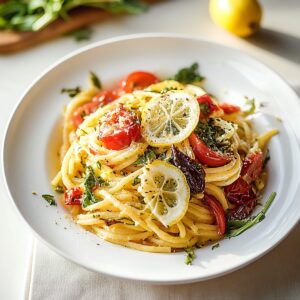
Lemon Herb Pasta Primavera Recipe
- Total Time: 15 minutes
- Yield: 4 1x
Description
Zesty lemon herb pasta primavera brings Mediterranean sunshine to your dinner table, dancing with fresh seasonal vegetables and bright herbal notes. Delicate pasta strands blend perfectly with crisp veggies, creating a light, refreshing meal you’ll crave again and again.
Ingredients
Main Ingredients:
- 8 ounces (226 grams) spaghetti or penne
- 2 cups mixed fresh seasonal vegetables (bell peppers, zucchini, cherry tomatoes)
Herbs and Seasonings:
- 2 tablespoons freshly squeezed lemon juice
- 1/4 cup fresh herbs (basil, parsley)
- 1 teaspoon salt
- 1/2 teaspoon black pepper
Finishing Ingredients:
- 2 tablespoons extra-virgin olive oil
- 1/4 cup grated Parmesan cheese (optional)
Instructions
- Bring a large pot of salted water to a rolling boil, then cook pasta until perfectly tender with a slight bite, approximately 8-10 minutes.
- Meanwhile, warm olive oil in a spacious skillet over medium heat and gently sauté a colorful medley of fresh, chopped vegetables until they become slightly translucent and tender, about 4-5 minutes.
- Infuse the vegetable mixture with bright, zesty lemon juice and fragrant, freshly chopped herbs, allowing the flavors to meld together for a brief moment.
- Transfer the perfectly cooked pasta directly into the skillet, tossing and coating each strand with the vibrant vegetable mixture, using reserved pasta water to create a silky, light sauce if needed.
- Elevate the dish with a delicate balance of salt and freshly ground black pepper, ensuring each bite is expertly seasoned.
- Plate the pasta immediately while piping hot, offering an optional sprinkle of finely grated Parmesan cheese for an extra layer of rich, savory complexity.
Notes
- Select seasonal, colorful vegetables like bell peppers, zucchini, and cherry tomatoes to enhance visual appeal and nutrition.
- Use fresh herbs such as basil, parsley, or thyme at the end of cooking to preserve their vibrant flavor and aroma.
- For a protein boost, add grilled chicken, shrimp, or tofu to make the dish more substantial and satisfying.
- Opt for whole wheat or gluten-free pasta to accommodate different dietary preferences and increase fiber content.
- Prep Time: 5 minutes
- Cook Time: 10 minutes
- Category: Lunch, Dinner
- Method: Boiling
- Cuisine: Italian
Nutrition
- Serving Size: 4
- Calories: 280 kcal
- Sugar: 4 g
- Sodium: 150 mg
- Fat: 10 g
- Saturated Fat: 1.5 g
- Unsaturated Fat: 8 g
- Trans Fat: 0 g
- Carbohydrates: 38 g
- Fiber: 5 g
- Protein: 7 g
- Cholesterol: 5 mg

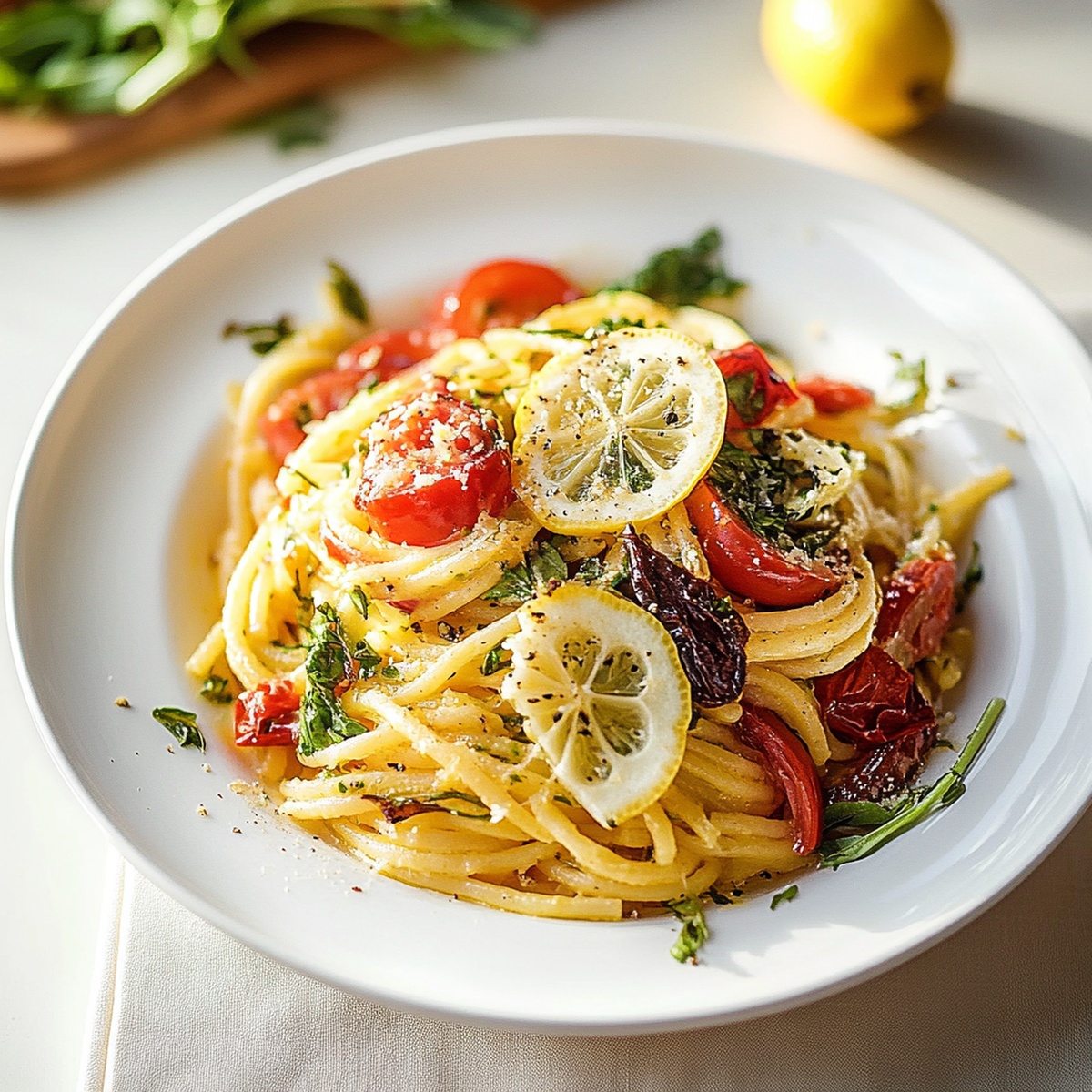
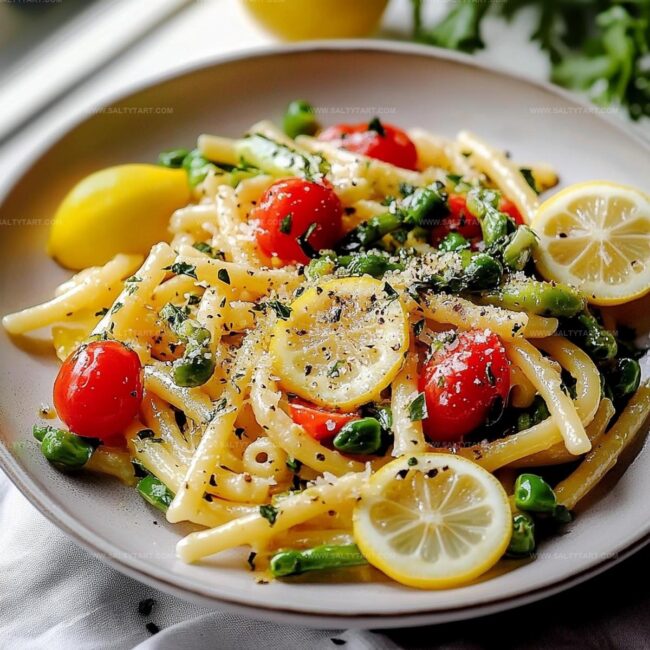
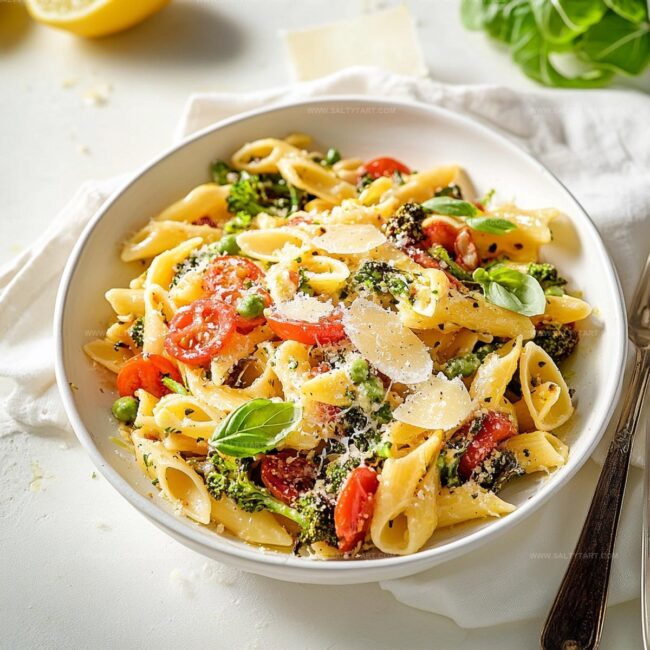
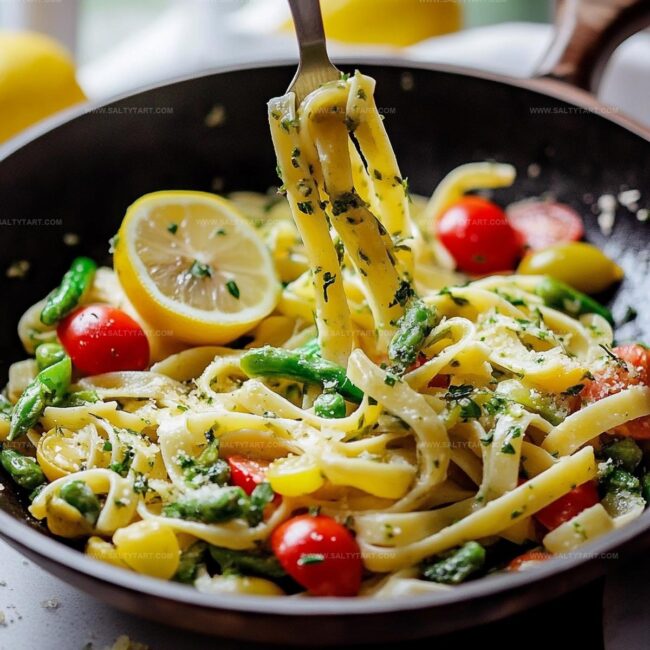

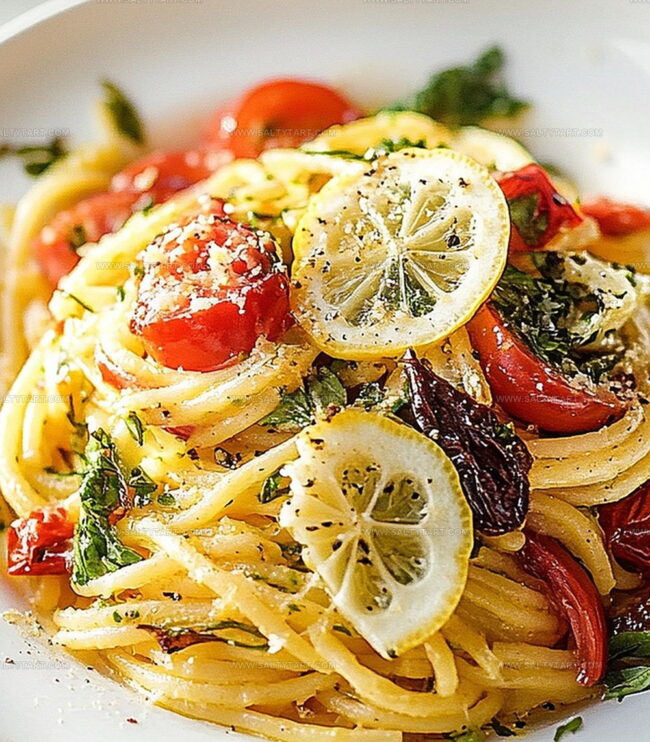
Mike Reynolds
Founder & Recipe Developer
Expertise
Farm-to-table cuisine, Seasonal recipe development, Sustainable cooking techniques, Food photography
Education
Asheville-Buncombe Technical Community College (A-B Tech)
Associate Degree in Culinary Arts
Mike studied culinary arts with a strong focus on farm-to-table principles and sustainable cooking. His training emphasized the importance of fresh, local ingredients and environmentally responsible practices in the kitchen.
Mike’s food journey began deep in the Blue Ridge Mountains, where weekends at farmers’ markets and home-cooked meals sparked a lifelong obsession with simple, seasonal eating.
After earning his Associate Degree in Culinary Arts from Asheville-Buncombe Technical Community College, he set out to bring farm-to-table cooking into everyday kitchens, without the fuss.
Mike’s philosophy is all about keeping it fresh, unfussy, and full of heart. When he’s not crafting new single-serving recipes, he’s hiking mountain trails, chatting with local farmers, or experimenting with wild ingredients in his backyard kitchen.